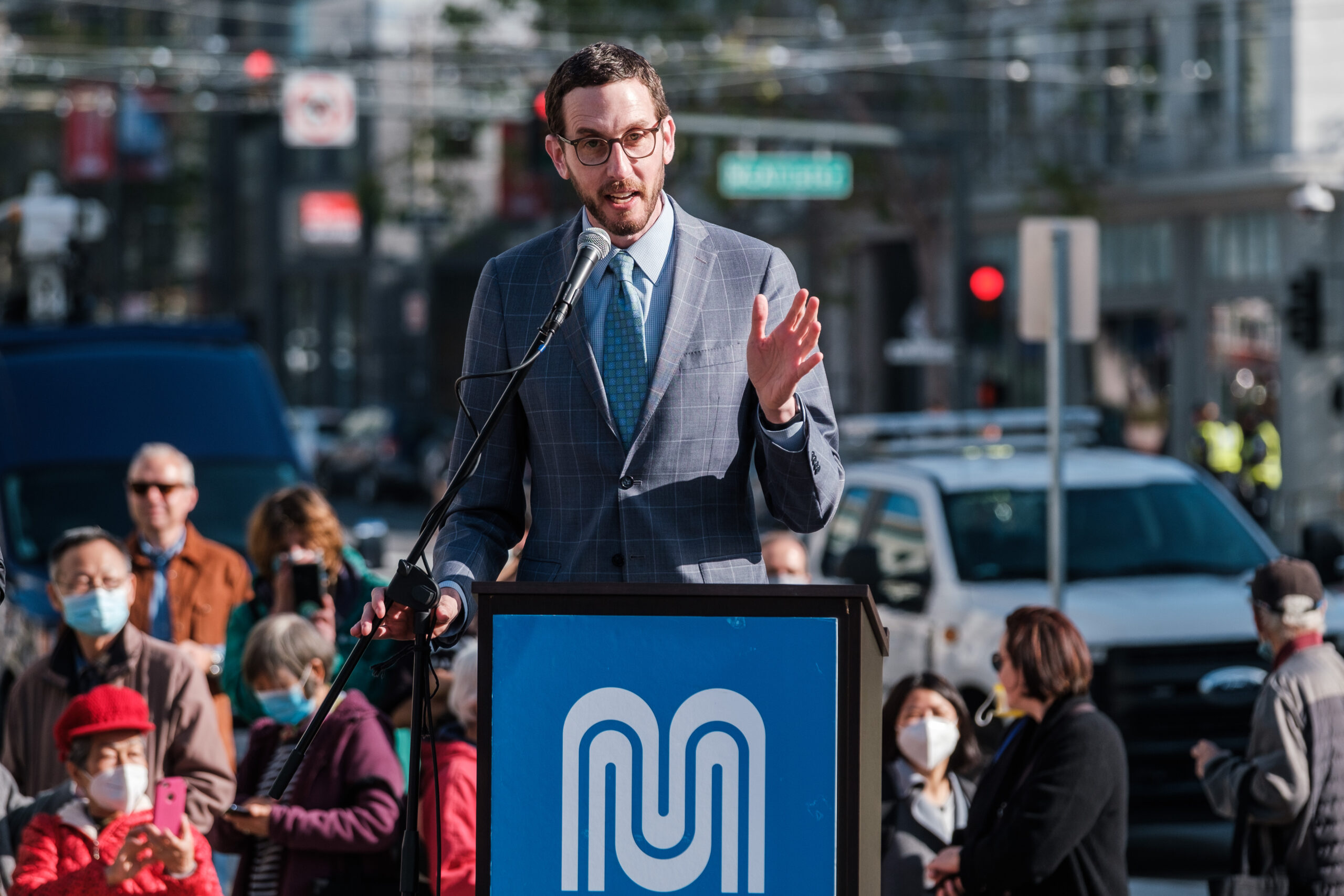State Sen. Scott Wiener called on Gov. Gavin Newsom and legislative leaders in Sacramento to boost funding for endangered transit agencies across the state and prevent “massive service cuts” at a press conference Wednesday.
Joined by representatives of a statewide “Survive and Thrive Coalition” of advocates that includes the California Transit Association, the Bay Area Council and others, Wiener described the dilemma facing transit as “one of the most underappreciated crises facing the state today.”
Wiener also endorsed a budget request from the California Transit Association that would secure $5 billion in funding over the next five years, to help agencies meet daily operations and adapt to new ridership patterns.
California’s public transit systems are currently swept up in a tide of diminishing returns caused by the emptying of downtowns during Covid. Lockdowns, followed by a rise in remote work, have caused ridership to crater and eroded agency budgets.
The end of federal Covid aid has transit systems teetering on fiscal cliffs that could force service cuts, starting as soon as 2025, that would further depress ridership and fare revenue.
“Our transit agencies are already starting to see shortfalls, and that is only going to cascade,” Wiener added, describing how cuts cause “even more riders to leave the system because it’s not reliable enough, leading to further cuts. It’s what we call a ‘death spiral.’”
Wiener announced that the Senate Democratic Caucus has introduced a legislative framework that would reject Newsom’s proposed cuts in favor of committing to identifying funding for transit shortfalls.
Laura Tolkoff, transportation policy director at the San Francisco Bay Area Planning and Urban Research Association, said, “The state has pegged many of its goals in climate, equity, housing and health to having great transit. […] We’ll never reach them if the state permits it to slip into a death spiral.”
Both Jeffrey Tumlin, transportation director at the San Francisco Municipal Transportation Agency, and Bay Area Rapid Transit Director Bevan Dufty said that their agencies will hit fiscal cliffs in 2025.
Tumlin said the cliff would necessitate cutting up to 20 Muni bus system lines, but noted that the actual process of cuts would occur sooner.
“If I need to cut 20 lines in 2025, I need to start this summer,” Tumlin explained, “eliminating one line per month until our budget balances, unless there’s some assurance from that state and regional and local governments because the alternative is laying off my workforce.”
Dylan Fabris, community and policy manager at San Francisco Transit Riders, listed hardships from existing service cuts, describing seniors in the Bayview who had to wait 20 minutes in the rain for bus connections and a teacher who had to start classes later due to students being passed up by full buses.
Wiener has led the call to restore funding since January when Newsom released a $297 billion budget proposal, which included a $2 billion cut to transit capital and other programs.
Most recently in San Francisco, the Board of Supervisors passed a resolution April 18 urging Sacramento to provide bridge and continuing funding, along with longer-term funding, to the state’s transit systems.
But the calls for funding have also been met with some skepticism, namely from state Sen. Steve Glazer, who has argued that funding for transit agencies should be accompanied by stricter oversight of their spending and management.
SFMTA and BART are hardly the only transit agencies facing a bleak fiscal outlook.
“In LA, it’s a similar timeframe but the difference is significantly larger,” said Michael Turner, director of Los Angeles County Metropolitan Transportation Authority. “We’re all in the same boat—San Diego, Orange County, Los Angeles, the Bay Area. We’re all in similar circumstances, and the solution has to be statewide.”
